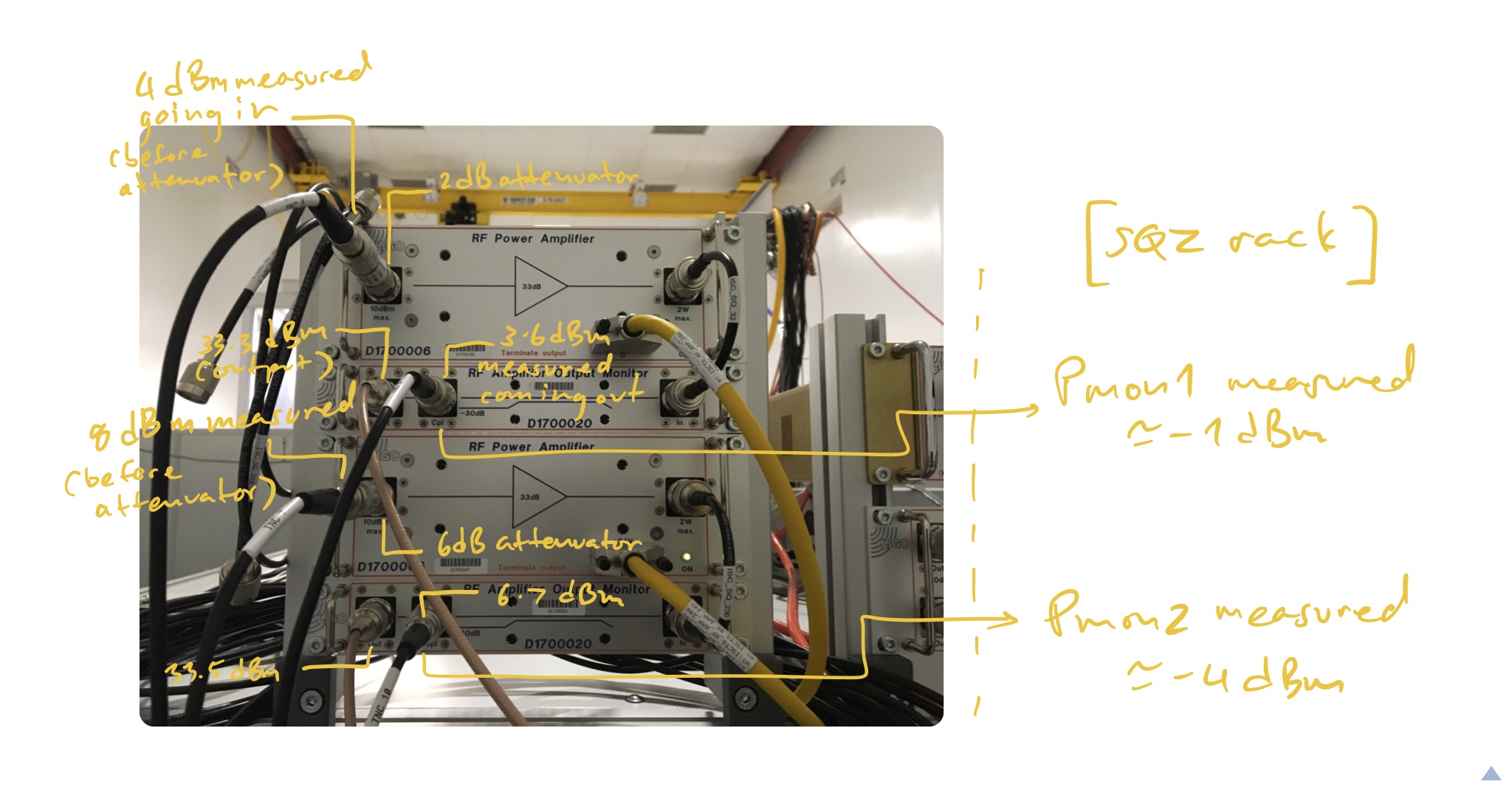Ops Shift Log: 01/19/2018, Day Shift 16:00 – 00:00 (08:00 - 16:00) Time - UTC (PT)
State of H1: Unlocked – Vented for upgrades
Intent Bit: Engineering
Support: N/A
Incoming Operator: N/A
Shift Summary: Commissioning work in CS. Quad work at End-Y
Activity Log: Time - UTC (PT)
15:35 (07:35) Chris – Both end stations for work in fan room
15:40 (07:40) Mark & Tyler – Moving laser barriers from LVEA to End-Y
16:00 (08:00) Start of shift
17:06 (09:06) Marc – Going to Squeezer to get a chassis
17:35 (09:35) Terry – Going to the Squeezer Bay
18:05 (10:05) Sheila – Going into the Optics Lab
18:06 (10:06) Filiberto & Ed – Cabling work in the Biergarten
18:29 (10:29) Betsy – Into the LVEA to look for parts
18:29 (10:29) Greg – In LVEA working on CO2 table
18:30 (10:30) Christina & Vanessa – Cleaning at End-X
18:30 (10:30) TJ – Into the LVEA to look for parts
18:34 (10:34) Marc – Out of the LVEA
18:37 (10:37) Liz – Into the Biergarten to assist with cabling work
18:39 (10:39) Betsy & Travis – Going to End-Y
18:45 (10:45) TJ – Out of the LVEA
18:59 (10:59) Richard – Going to the CER
19:15 (11:15) Robert – Going to End-Y to make PCal baffle measurements
19:23 (11:23) Filiberto, Liz, & Ed – Finished in Biergarten – moving to HAM5/6
19:34 (11:34) Kyle – Going into the LVEA
20:37 (12:37) Filiberto – Going back to HAM5/6 for cabling work
20:42 (12:42) Ed – Going back to HAM5/6 for cable pulling
20:56 (12:56) TVo – Turning on SR3 OpLev
20:57 (12:57) Robert – Back from End-Y
20:59 (12:59) Betsy & Travis – Going to End-Y
21:02 (13:02) Liz – Going to HAM5/6 for cable pulling
21:08 (13:08) Richard – Going into LVEA
21:09 (13:09) Gerardo – Going to End-Y
21:10 (13:10) Kissel & Marc – Going into the LVEA
21:11 (13:11) TJ – Going into the Optics Lab
21:20 (13:20) Kissel & Marc – Out of the LVEA
21:40 (13:40) Jason – Going to end-Y to setup for measurements
21:40 (13:40) Marc – Going into LVEA
21:46 (13:46) Chandra – Going into the LVEA
22:15 (14:15) Sheila – Going into the Optics Lab
22:38 (14:38) Kissel – Going to HAM5 for cabling
22:48 (14:48) Gerardo – Back from End-Y
22:50 (14:50) Ed – Out of the LVEA
23:21 (15:21) Betsy & Travis – Back from End-Y
00:00 (16:00) End of shift









































